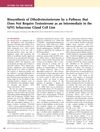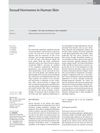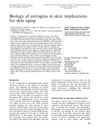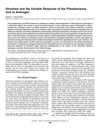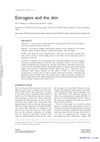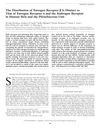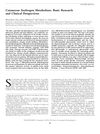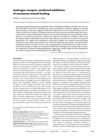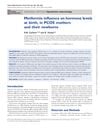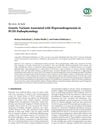Gender Differences in Production and Circulating Levels of Sex Hormones and Their Impact on Aging Skin
September 2014
in “
Springer eBooks
”
sex hormones DHEA DHEAS estrone testosterone bioavailable testosterone estradiol androgens estrogens collagen production skin moisture water-holding capacity sebum production hair growth dehydroepiandrosterone dehydroepiandrosterone sulfate androstenedione estrogen collagen skin hydration oil production
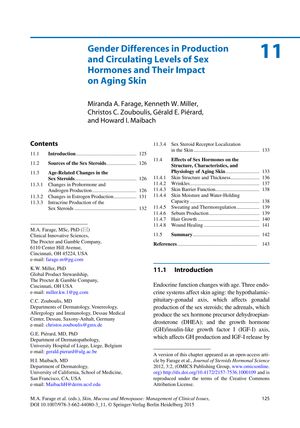
TLDR Men and women experience skin aging differently due to changes in sex hormone levels with age.
The document from 2014 reviews the impact of sex hormones on skin aging, highlighting gender differences. It explains that sex hormones are produced by the gonads and adrenals and converted to active forms in peripheral tissues. Circulating levels of DHEA and DHEAS decline with age, contributing to aging changes, with women having lower levels than men. Postmenopausal women rely on peripherally synthesized estrone, while older men depend on adrenal DHEA for their androgen pool. The Massachusetts Male Aging Study indicated that testosterone levels in men decrease by 0.8% per year cross-sectionally and 1.6% per year longitudinally, with bioavailable testosterone declining by 2-3% per year. In women, testosterone levels decline between ages 20 and 50, but menopause does not significantly affect these levels, while estradiol levels drop dramatically during menopause. Androgens and estrogens influence skin aging, with androgens promoting thicker skin and higher collagen production, and estrogens increasing skin moisture and water-holding capacity. Gender differences in skin aging are evident, with men having thicker skin and women experiencing more pronounced alterations in skin elasticity post-menopause. The document also discusses the role of sex hormones in sweating, sebum production, and hair growth, with specific differences between men and women. It concludes that the balance of androgens and estrogens with age might affect skin barrier function, with systematic comparisons in age-matched men and women not yet published.

